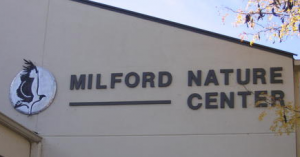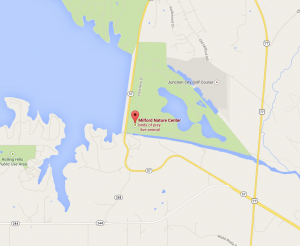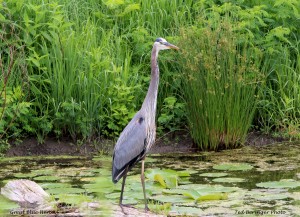A new poll shows that sportsmen and women in the heart of Greater Sage-grouse country want to protect the bird and the sagebrush landscape that supports it, other wildlife and the Western way of life.
The results released November 19 by the National Wildlife Federation show that a majority of sportsmen surveyed in 11 Western states back restrictions in important habitat to save the Greater Sage-grouse and avoid its placement on the federal Endangered Species List. A listing likely would lead to more stringent, long-term constraints that would affect such activities as hunting, fishing, recreation and grazing, said John Gale, NWF’s national sportsmen’s campaign manager.
“First and foremost, it’s critical that we save this iconic Western wildlife species,” Gale said. “We can do that with strong conservation plans that protect key Greater Sage-grouse habitat while allowing responsible energy development, grazing and other activities on other public lands.”
The plight of the Gunnison Sage-grouse underlines how important it is to act decisively, using sound science, to conserve a species before more drastic measures are necessary, Gale added.
The U.S. Fish and Wildlife Service announced last week that it is classifying the Gunnison Sage-grouse as threatened to keep it from going extinct. The Gunnison Sage-grouse, smaller than the Greater Sage-grouse, is found in portions of Colorado and southeastern Utah on just 7 percent of its historic range.
While Greater Sage-grouse numbers have been declining for years, the chicken-sized bird with the spiky tail feathers and extravagant mating dance still occupies about 56 percent of its historic range. Its habitat has been carved up and diminished by, among other things, urban growth, oil and gas drilling, invasive species and drought.
Under a court-ordered agreement, Fish and Wildlife will decide by next year whether to list the Greater Sage-grouse.
“If we are to prevent the listing of the sage-grouse under the Endangered Species Act, we must engage in collaborative implementation strategies that will lead to population increases throughout the bird’s range,” said Ed Arnett, director of the TheodoreRooseveltConservationPartnershipCenter for Responsible Energy Development. “More than 350 species of plants and animals rely on healthy sagebrush habitat. The Greater Sage-grouse is the canary in this particular coal mine, and how we deal with it will affect an entire ecosystem.”
The poll conducted by Southwick Associates for NWF shows a majority of sportsmen and women in 11 Western states agree. Among the results from the survey of 1,335 hunters between Sept. 23 and Oct. 3 are:
- Nine out of ten hunters believe it is important to take action to protect sage-grouse habitat within their state. Moreover, 84 percent of hunters support steps by the BLM to protect critical sage-grouse habitat even if it means limiting energy development, grazing rights or access for motorized recreation on those lands.
- Hunters generally link protection of sage-grouse habitat with maintaining healthy populations of other wildlife species. About 81 percent of hunters are at least somewhat convinced that steps taken to protect the sage-grouse, such as maintaining large tracts of undisturbed lands or limiting resource extraction activities, also benefits other game species that share the same habitat (e.g., elk, mule deer, pronghorn) and preserves hunting traditions long associated with the American West.
- Nearly 79 percent of the respondents had fished or hunted on public land in their state in the past year.
Land Tawney, executive director of Backcountry Hunters & Anglers, said because the majority of Greater Sage-grouse habitat is on public lands, the Bureau of Land Management and states where the bird is found must step up now.
“It’s not just about the bird; it’s about the herds of mule deer and pronghorns, the hunting and other recreation made possible by healthy habitat,” Tawney added.
And it’s about the continued health of the countryside enjoyed by people from all backgrounds, said Nevada Wildlife Federation Vice President Kevin Cabble.
“The Greater Sage-grouse’s future is tied to the landscapes where we camp, hike, hunt and fish. The bird’s fate will be a barometer of fate of our public lands heritage and outdoor legacy,” Cabble added.
The survey of Western hunters comes on the heels of a recent report showing minimal overlap between important Greater Sage-grouse habitat and existing energy leases and rights of way and that 73 percent to 81 percent of areas with medium to high potential for energy development are outside the bird’s habitat. A recent analysis found that recreation on BLM-managed sagebrush lands generated more than $1 billion in economic benefits in 2013.
“The sage-grouse is an iconic species of the west and a treasured game bird to America’s upland hunting heritage. Hunters know that a successful recipe for the bird’s recovery must include strong partnerships with ranchers, natural resource management agencies, and thoughtful collaborations like the Sage-Grouse Initiative,” said Howard Vincent, President and CEO of Pheasants Forever, Inc.
Southwick surveyed the 1,335 randomly selected sportsmen and women in the following states: Montana, Colorado, Nevada, North Dakota, South Dakota, Utah, Wyoming, Washington, Oregon, Northern California and Idaho. The poll’s margin of error is 2.7 percent.
Read the executive summary and results:
http://www.ourpubliclands.org/new-poll-finds-sportsmen-and-women-support-sage-grouse-conservation
The National Wildlife Federation is America’s conservation organization inspiring Americans to protect wildlife for our children’s future.



